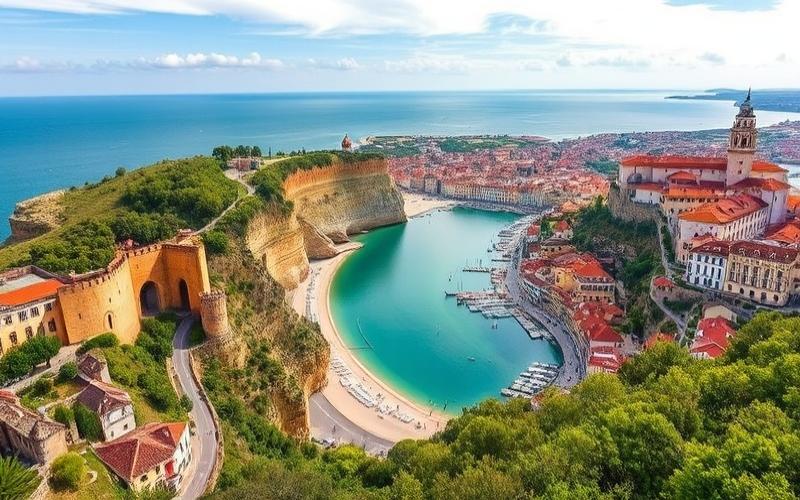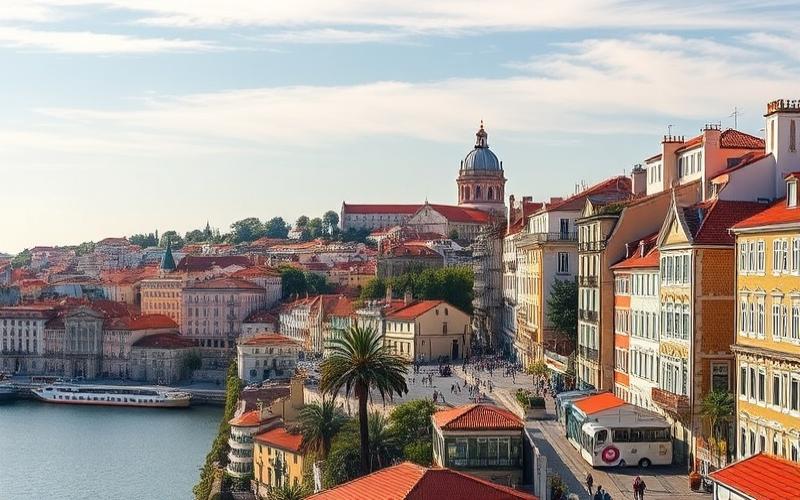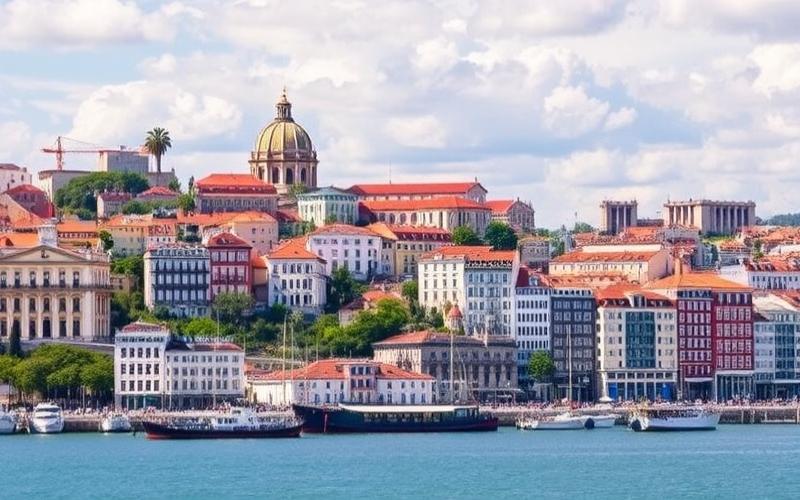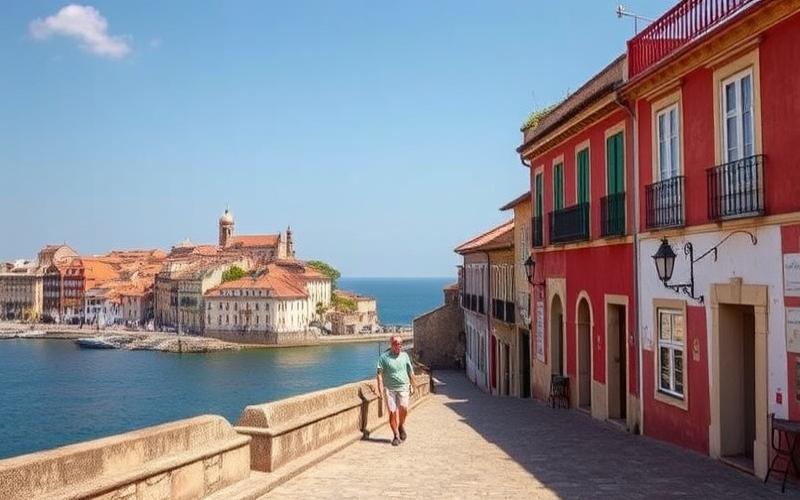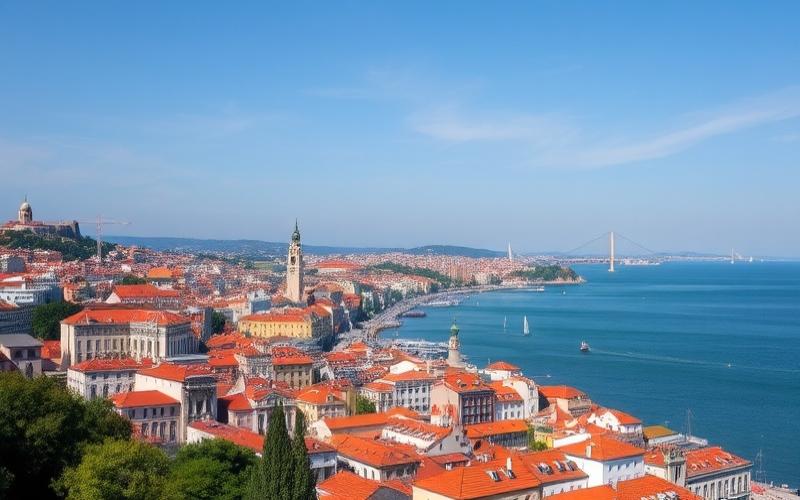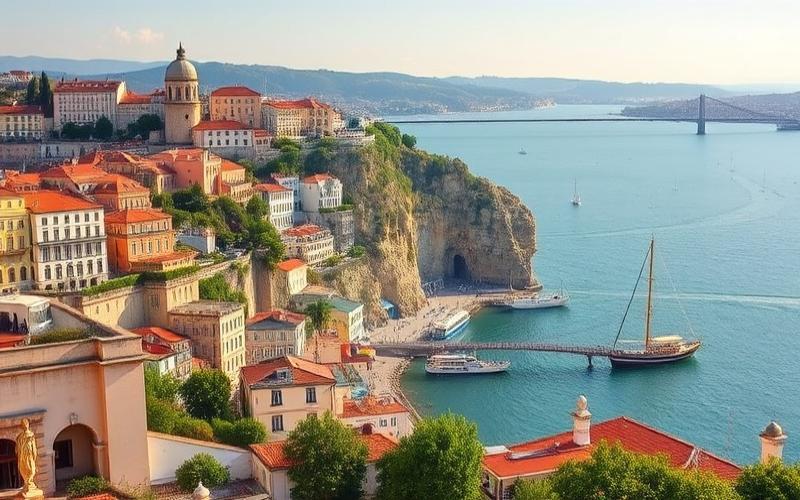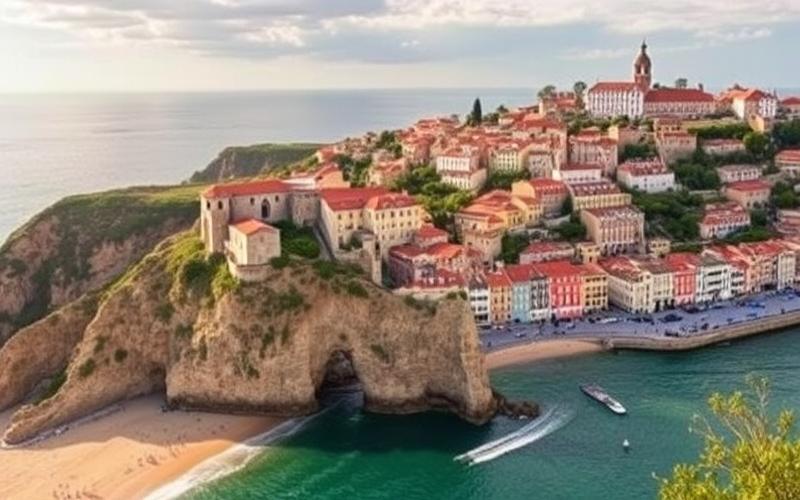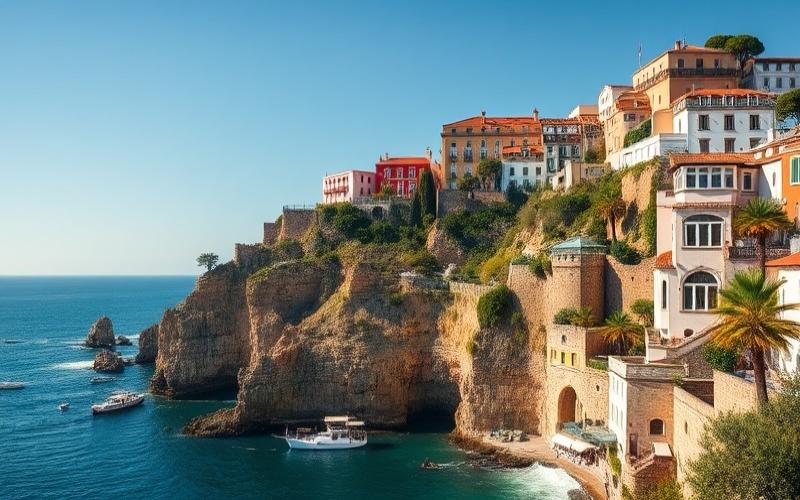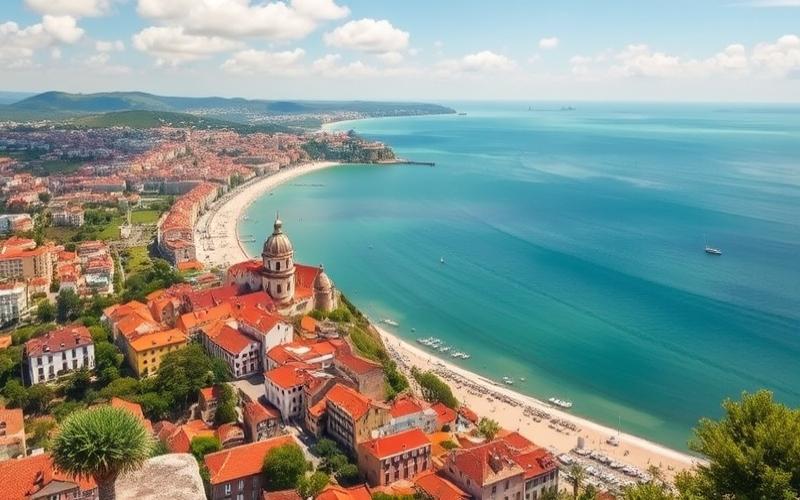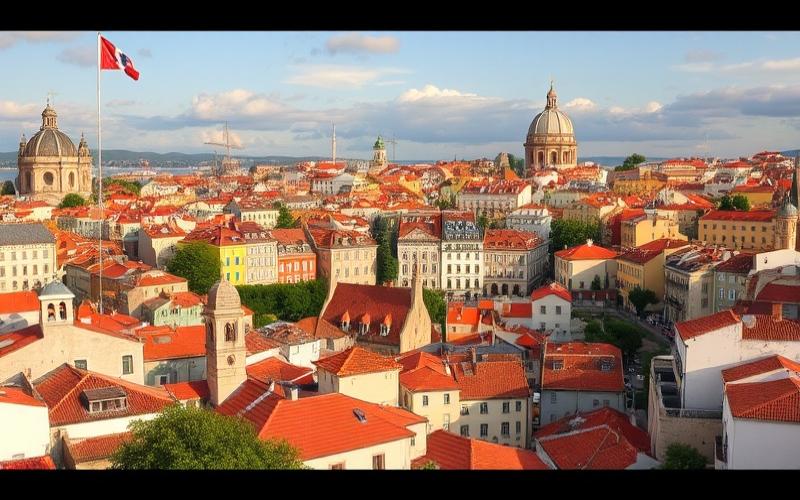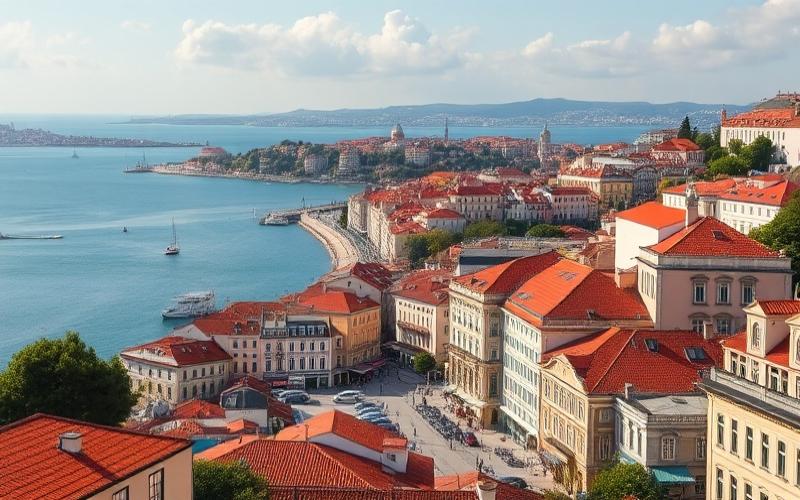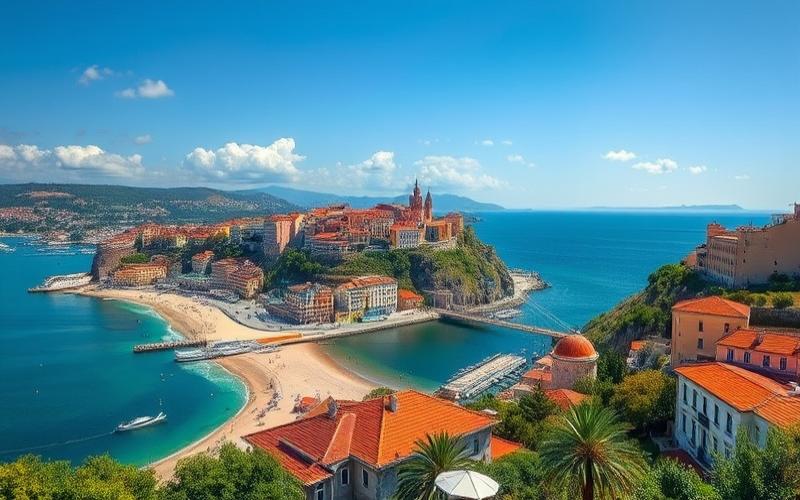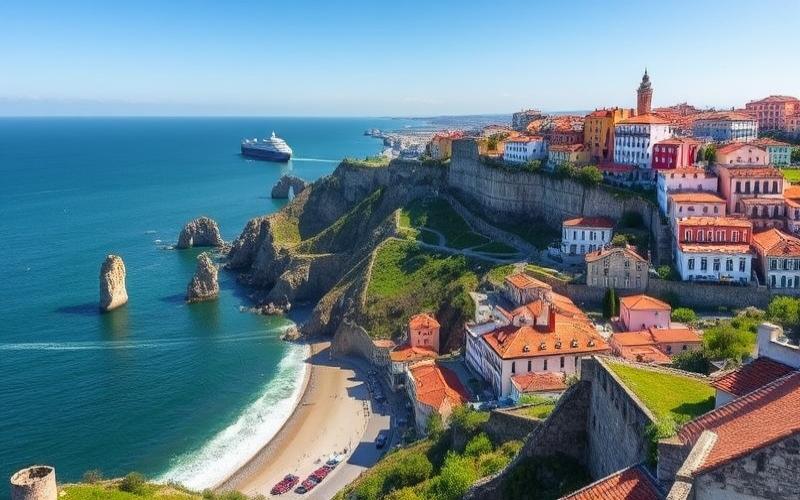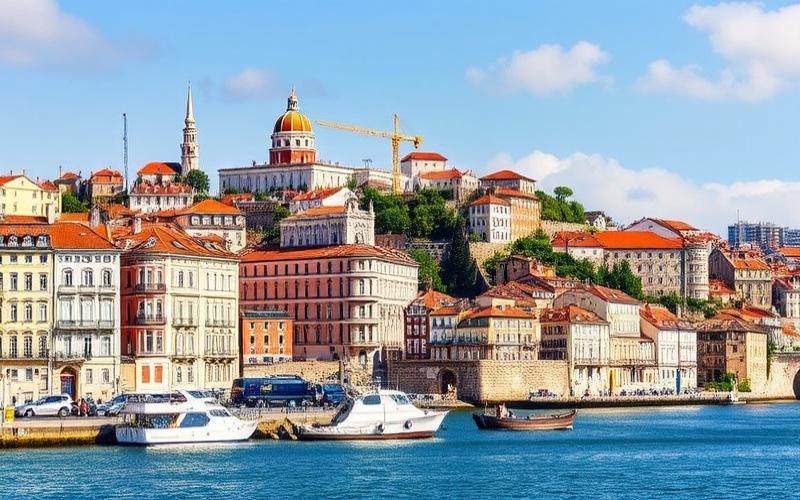
 Published on and written by Cyril Jarnias
Published on and written by Cyril Jarnias
Portugal, with its picturesque cities and breathtaking landscapes, offers a diverse and efficient public transportation network. Whether you’re a newly arrived expatriate or a long-term resident, understanding the Portuguese public transport system is essential to fully enjoy your stay in this beautiful country. In this article, we’ll explore in detail the different available transportation modes and give you a precise idea of the budget to plan for your daily commutes.
A Varied Transportation Network for All Tastes
Portugal has a well-developed public transport system, particularly in major cities like Lisbon and Porto. There are numerous options suited to all needs, whether you want to get around the city quickly or explore the country’s more remote regions.
The Metro: The Backbone of Major Cities
The metro is undoubtedly the fastest and most efficient means of transportation in major Portuguese cities. In Lisbon, the metro network includes four lines covering a large part of the city. Stations are easily recognizable by their red “M” logo. The Lisbon metro is famous for its themed stations, true underground works of art worth visiting.
In Porto, the metro is actually a light rail system combining underground sections and surface routes. It serves not only the city of Porto but also extends to neighboring municipalities, offering excellent connectivity throughout the metropolitan area.
Buses: For Complete Territorial Coverage
The bus network in Portugal is extremely developed and often the most convenient way to get around, whether within cities or between different localities. In major cities, buses effectively complement the metro network, serving areas not covered by underground lines.
Outside urban centers, intercity buses connect different towns and villages across the country. These routes are typically operated by private companies like Rede Expressos or Renex, offering comfortable and affordable services for long-distance travel.
Trams: Retro Charm in the Heart of Cities
Trams, particularly in Lisbon, are much more than just a means of transportation: they’re a genuine tourist attraction. The famous yellow tram (elétrico) winding through the capital’s narrow streets has become a city symbol. Although mainly used by tourists, these trams remain a practical transportation method for residents, especially for climbing Lisbon’s steep hills.
Trains: To Explore the Country Far and Wide
The Portuguese railway network, managed by the national company CP (Comboios de Portugal), offers an excellent way to travel between the country’s main cities. Trains in Portugal are generally punctual, comfortable, and provide an economical alternative to cars for long distances.
For daily commutes, suburban trains are particularly useful in the metropolitan areas of Lisbon and Porto. They allow residents of peripheral towns to easily reach downtown for work or study.
Ferries: A Refreshing Option
In coastal cities like Lisbon, ferries are an integral part of the public transport system. They allow crossing the Tagus River and connecting the capital to the south bank, offering a picturesque alternative to often congested road bridges. These boat crossings are not only practical for daily commutes but also offer superb city views.
Good to Know:
Most transportation modes in Portugal are accessible with a single type of card, like Viva Viagem in Lisbon or Andante in Porto, greatly simplifying public transport use for residents and visitors.
Transportation Budget: How Much to Plan for Your Travel?
For an expatriate living in Portugal, public transport costs typically represent a reasonable portion of the monthly budget. Fares are relatively affordable, especially compared to other European countries. Here’s a detailed overview of expenses to plan for your daily commutes.
Monthly Passes: The Economical Solution for Residents
Most Portuguese cities offer monthly passes providing excellent value for regular public transport users. In Lisbon, for example, the Navegante pass is the most advantageous option for residents.
The Navegante Municipal, valid only for Lisbon municipality, costs €30 per month. For those needing to travel throughout the Lisbon metropolitan area, the Navegante Metropolitano is available for €40 per month. These passes provide access to all public transport modes (metro, bus, tram, suburban train, and ferry) in covered zones.
In Porto, the system is similar with Andante, whose rates vary depending on covered zones. A monthly pass for Porto’s central zone costs about €30, while a pass covering a wider area can go up to €40 or more.
Single Tickets: For Occasional Use
For those using public transport only occasionally, single tickets or prepaid cards are an interesting option. In Lisbon, a single metro or bus ride costs about €1.50. In Porto, fares are similar, with single tickets starting from €1.20.
It’s important to note that in most cities, there are “zapping” or card reloading options offering slightly reduced rates compared to individually purchased tickets.
Trains for Intercity Travel
For train travel between major cities, fares vary depending on distance and train type. For example, a Lisbon-Porto trip on a fast train (Alfa Pendular) can cost between €30 and €45 in second class, while a slower Intercidades train will be cheaper, around €25 to €35.
Estimated Monthly Budget for an Expatriate
Considering all these elements, here’s an estimate of the monthly public transport budget for an expatriate living in a major Portuguese city:
- Monthly pass for urban transport: €30 to €40
- Some occasional trips outside pass zone: €10 to €20
- One or two intercity trips per month: €50 to €100
In total, an expatriate can expect to spend between €90 and €160 per month on public transport, depending on travel habits and location. This budget remains relatively moderate compared to other European countries, making Portugal an attractive destination for expatriates mindful of their transportation budget.
Good to Know:
Many companies in Portugal offer their employees transportation benefits, such as partial or full coverage of the monthly pass. Don’t hesitate to inquire with your employer about available assistance.
Practical Tips to Optimize Your Travel
To make the most of the Portuguese public transport system, here are some practical tips to keep in mind:
Invest in a Rechargeable Card
In most cities, it’s more economical and practical to use a rechargeable card rather than buying individual tickets for each trip. In Lisbon, the Viva Viagem card costs only €0.50 and can be reloaded with different types of transport tickets.
Take Advantage of Discounts
Many discounts are available for certain traveler categories. Seniors, students, and children often benefit from reduced fares. Don’t hesitate to inquire about eligibility conditions.
Plan Your Trips in Advance
Use available public transport applications to plan your trips. They’ll provide real-time information on schedules and any disruptions.
Consider Soft Mobility Options
Many Portuguese cities are developing bicycle lane networks and offering bike-sharing systems. These options can effectively complement public transport use while being economical and ecological.
The public transport system in Portugal offers excellent coverage and affordable fares, making the country an ideal destination for expatriates. Whether you choose to live in a major city like Lisbon or Porto, or in a more rural region, you’ll always find transportation options suited to your needs.
As an expatriate, taking the time to understand and effectively use the public transport network will not only allow you to make substantial savings but also fully immerse yourself in Portuguese daily life. It’s an excellent way to discover local culture, improve your Portuguese, and truly feel at home in your new adopted country.
Remember that your choice of residence can greatly influence your transportation expenses. Opting for housing well-served by public transport can lead to significant long-term savings while improving your quality of life.
Finally, don’t hesitate to explore the different available transportation options. Each transport mode in Portugal has its particular charm and will offer you a unique perspective on this beautiful country. Whether admiring azulejos in Lisbon’s metro stations, enjoying panoramic views from a ferry crossing the Tagus, or discovering the Portuguese countryside from a train window, every journey can become an enriching experience.
Disclaimer: The information provided on this website is for informational purposes only and does not constitute financial, legal, or professional advice. We encourage you to consult qualified experts before making any investment, real estate, or expatriation decisions. Although we strive to maintain up-to-date and accurate information, we do not guarantee the completeness, accuracy, or timeliness of the proposed content. As investment and expatriation involve risks, we disclaim any liability for potential losses or damages arising from the use of this site. Your use of this site confirms your acceptance of these terms and your understanding of the associated risks.



